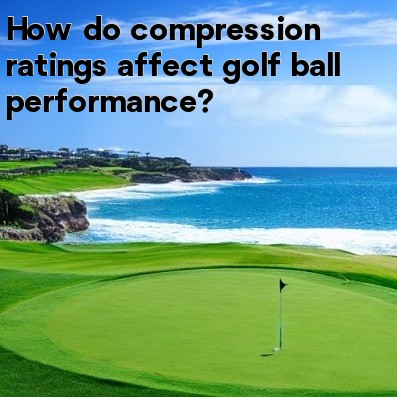
When it comes to selecting the right golf ball for your game, one of the key factors to consider is the compression rating. The compression rating of a golf ball refers to how tightly the ball is constructed, and this affects its performance in various ways.
Distance:
- Low Compression: Golf balls with a low compression rating, typically around 70 or below, are designed to compress easily upon impact. This can help golfers with slower swing speeds generate more distance. The softer feel of these balls allows them to compress more, resulting in more energy transfer and longer shots.
- High Compression: On the other hand, golf balls with a higher compression rating, typically around 90 or above, are designed for golfers with faster swing speeds. These balls require more force to compress, but when they do, they tend to generate more ball speed. This can lead to increased distance for golfers with higher swing speeds.
Control:
- Low Compression: Golf balls with lower compression ratings also tend to have more spin, which can be beneficial for golfers looking for more control over their shots. The added spin allows the ball to stop quicker upon landing and provides more control on approach shots and around the greens.
- High Compression: Golf balls with a higher compression rating generally have less spin, which can be advantageous for golfers who want to reduce sidespin and keep their shots straight. These balls tend to have a firmer feel and a lower trajectory, making them more suitable for players with faster swings who prioritize distance over control.
Feel:
- Low Compression: Golf balls with a lower compression rating typically have a softer feel, which can be preferred by many golfers. The softer feel provides more feedback on the impact and gives a sense of control and accuracy. These balls are generally more forgiving on off-center hits.
- High Compression: Golf balls with higher compression ratings tend to have a firmer feel. Some golfers prefer this firmer feel as it gives a perception of increased distance and control. However, for golfers with slower swing speeds, the firmness may result in less feel and feedback on their shots.
Choosing the Right Ball:
When choosing a golf ball, it is important to consider your swing speed, skill level, and playing style. Golfers with slower swing speeds may benefit from using a low compression ball, as it can help increase both distance and control. Golfers with faster swing speeds may find a higher compression ball more suitable to maximize their distance potential. It's also worth experimenting with different compression ratings to find the ball that feels the best to you and complements your playing style.
In conclusion, compression ratings play a significant role in golf ball performance. They can significantly affect the distance, control, and feel of a golf ball. Understanding your swing speed and preferences will help you select the right compression rating to optimize your performance on the course.





